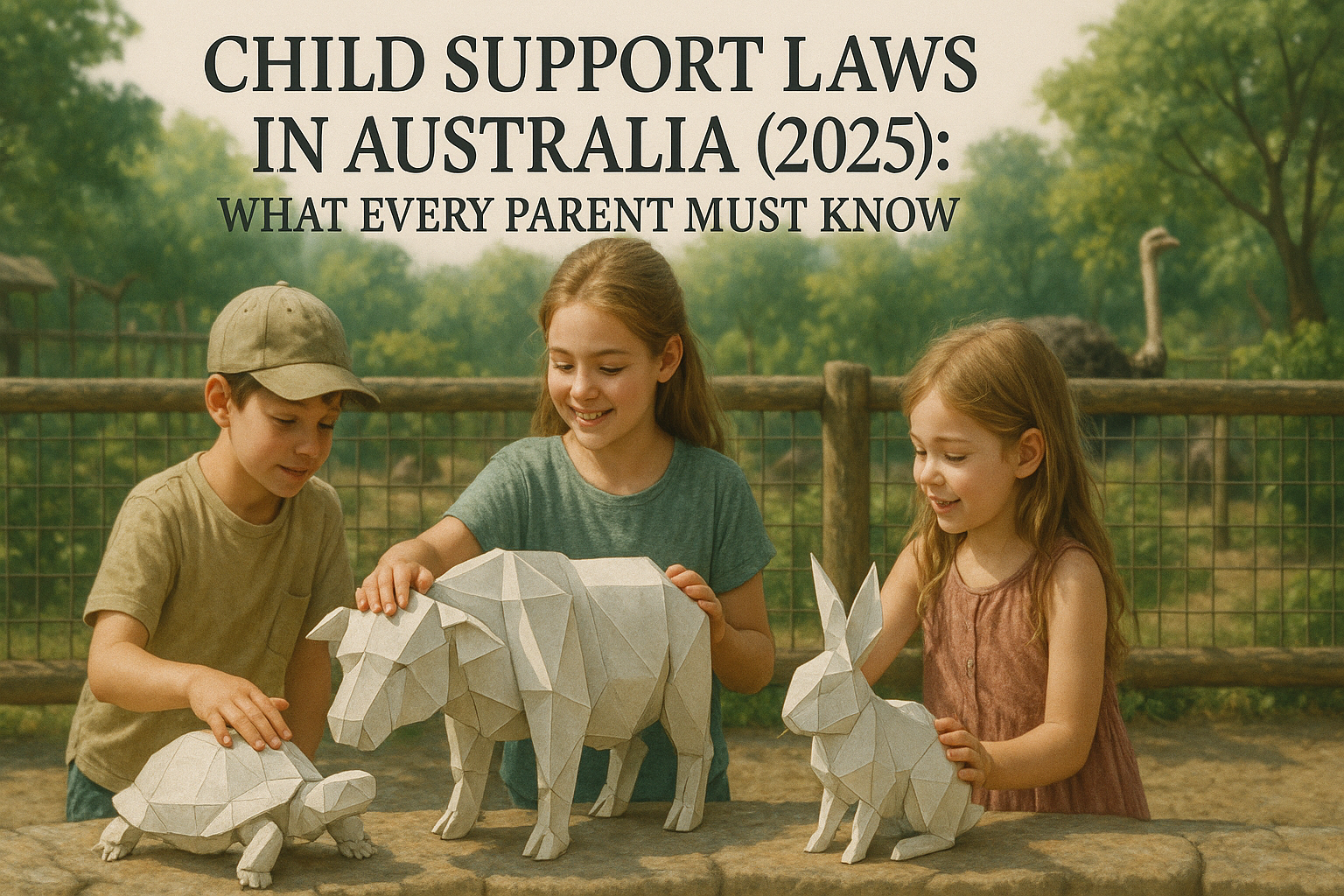Child Support Laws in Canada: Child support in Canada isn’t just a legal formality—it’s about making sure children continue to receive the emotional and financial support they deserve after their parents separate. In 2025, there have been some important updates to child support guidelines across the provinces, making it crucial for every parent—whether paying or receiving—to stay informed.
This blog will guide you through how child support works in Canada, what’s new in 2025, how payments are calculated, and what rights and responsibilities each parent holds.
Table of Contents
📚 What is Child Support in Canada?
Child support is a legal obligation where one parent (typically the non-custodial parent) provides financial assistance to the parent who has the primary care of the child. These payments cover:
- Food, housing, and clothing
- Education expenses
- Healthcare and extracurricular costs
Child support in Canada is governed by the Federal Child Support Guidelines, under the Divorce Act, and is enforced by provincial agencies.
🔍 Who Must Pay Child Support?
- Married or Divorced Parents – Covered under the Divorce Act (Federal)
- Unmarried/Common-law Parents – Covered under Provincial/Territorial Laws
No matter the relationship, both parents are legally responsible for the financial support of their children.
📊 How Child Support Is Calculated in Canada (2025)
Child support payments are primarily based on:
| Factor | Explanation |
|---|---|
| Paying parent’s income | Gross annual income is the base for calculation |
| Number of children | The more children, the higher the support |
| Province of residence | Each province has its own income tables |
| Shared custody situations | Adjusted if the child lives 40%+ of the time with each parent |
➡️ 2025 Update: Federal Child Support Tables have been adjusted to reflect inflation and cost of living increases, especially in Ontario, B.C., and Alberta.

📍 Real-Life Example (Ontario, 2025)
Sarah and John are divorced and live in Toronto. They have two kids. John earns $75,000 per year and the children live primarily with Sarah.
➡️ According to the Federal Child Support Guidelines for Ontario, John would pay approximately $1,119/month in child support for two children.
If the kids lived 50/50 with both parents and Sarah earned a similar income, the amount would be adjusted using the offset method.
📁 Types of Child Support in Canada: Child Support Laws in Canada
- Section 3 (Basic Child Support) – Fixed monthly amount for basic expenses.
- Section 7 (Special or Extraordinary Expenses) – Includes:
- Childcare
- Medical/dental (not covered by insurance)
- Educational tutoring
- Post-secondary education
- Sports and arts programs
➡️ Both parents must share Section 7 expenses based on their income ratio.
🧾 What’s New in 2025? (Key Legal Updates)
- ✅ Updated Federal Child Support Tables – Adjusted for inflation.
- ✅ Online Child Support Portal – Nationwide rollout of real-time case status and payment tracking.
- ✅ Tighter Enforcement Rules – License suspensions and garnishment for overdue payments are faster.
- ✅ AI-based Child Support Calculator Tools – Integrated in most provinces.
- ✅ More Emphasis on Mediation – Courts recommend mediation before litigation in most provinces.
⚖️ Rights and Obligations of Each Parent: Child Support Laws in Canada
| Right/Obligation | Description |
|---|---|
| Right to apply for support | The parent with custody or caregiving rights can apply |
| Obligation to disclose income | Annual income disclosure is mandatory |
| Right to review adjustments | Child support can be changed if income or custody arrangements change |
| Obligation to pay on time | Late or missed payments can result in legal penalties or wage garnishment |
❓ FAQs: Child Support in Canada (2025)
1. Until what age is child support required in Canada?
Usually until the child turns 18, but may continue if the child is in full-time school or has a disability.
2. Can child support be changed later?
Yes. If there’s a significant change in income or custody, you can request a modification.
3. Is child support taxable in Canada?
No. The recipient doesn’t pay tax, and the payer cannot claim it as a deduction.
4. Can I refuse to pay if I don’t see my child?
No. Visitation and child support are separate legal matters.
5. What if the other parent moves to another province or country?
Canada has reciprocal agreements with over 30 countries. Support is still enforceable.
6. Do common-law couples need to follow these rules?
Yes, though jurisdiction may vary between federal and provincial rules.
7. Is mediation mandatory in 2025?
Some provinces, like British Columbia and Alberta, encourage or require it before court hearings.
8. What happens if I don’t disclose income?
The court can impute income based on your lifestyle and bank statements.
9. Can support payments be made directly?
Yes, but it’s recommended to go through Maintenance Enforcement Programs for tracking.
10. Do step-parents pay child support?
Only if they stood in the place of a parent and the court determines a duty of care.
➡️ Understanding Section 7 Expenses in Canada (2025): How Both Parents Share Costs Based on Income Ratio
In Canadian family law, Section 7 expenses refer to “special or extraordinary expenses” that go beyond regular child support payments. These costs are typically shared between both parents—not equally, but in proportion to their incomes. In 2025, understanding how Section 7 expenses work is more important than ever due to rising living costs and the increasing complexity of parenting expenses.
Let’s dive deep into what these expenses are, how the income ratio rule works, and why accurate income disclosure is crucial.
✅ What Are Section 7 Expenses?
Section 7 of the Federal Child Support Guidelines covers extra costs related to a child’s well-being and development. These include:
- Childcare fees (e.g., daycare, after-school programs)
- Medical/dental expenses not covered by insurance
- Educational costs (tutoring, private school, post-secondary fees)
- Extracurricular activities (sports, music lessons, art programs)
- Disability-related expenses (therapy, support equipment)
These expenses must be:
- Necessary for the child’s best interest
- Reasonable based on the parents’ financial situations
📊 How Section 7 Expenses Are Shared: Income Ratio Explained
Unlike base child support, Section 7 expenses are not automatically calculated from standard child support tables. Instead, they are shared proportionally based on each parent’s income.
🔎 Example:
- Parent A’s income: $70,000
- Parent B’s income: $30,000
- Total income: $100,000
Income ratio:
- Parent A contributes 70%
- Parent B contributes 30%
If the total annual Section 7 expense is $5,000, the breakdown would be:
- Parent A pays: $3,500
- Parent B pays: $1,500
This approach ensures fairness, especially when one parent earns significantly more than the other. The higher-income parent shoulders a larger portion of the financial burden.
📝 What You Need to Know in 2025
- Full income disclosure is mandatory – Both parents must provide updated income documents (tax returns, pay slips, etc.)
- Courts require receipts and proof – To classify an expense under Section 7, documentation is essential.
- Not all expenses are approved – For example, private school or elite sports might not qualify unless both parents previously agreed or it was part of the child’s lifestyle before separation.
- Provincial variations exist – While federal guidelines apply across Canada, provinces like Ontario, B.C., and Alberta may interpret “extraordinary” slightly differently.
💡 Pro Tip: Use an Online Calculator
Many provincial court websites offer child support calculators that include Section 7 sharing tools. This helps parents estimate what each will owe and prevents future disputes.
📌 Conclusion
Understanding child support laws in Canada (2025) helps you avoid financial surprises, legal battles, and emotional stress—while making sure your children thrive. Whether you’re the one receiving or paying, staying informed is your best protection.
💬 Need help calculating child support? Use the official Child Support Calculator Canada 2025.

